What's next? Your ideas.
How to continue with the open.theremin project?
- desktop production
- redesign with some improvement, ideas from theremin world discussions and simplifications?
- set up an open circuit manufacturing fab and do a big batch.
Open.Theremin.Y
4. Septmeber 2014
Short update and thoughts on the prototype of the Open.Theremin.Y after some testing and quite some hours of coding:
- Theremins are quite delicate circuits and minor changes (in code or electronics) can affect a lot :-)
- The new design simplifies the fixed frequency oscillator, the filter, the comparator and the CV out. This is a lot of tear down and I felt the effect of each part (great for assembling, strong effect on the performance). The Open.Theremin.UNO seems to be quite optimized in it's overall design and it seems to be difficult to simplify without compromising the quality.
- While wrapping my mind around the heterodyne oscillator I found a new way of (even further) simplifying the mixer and filter by using a D-Flip-Flop (kind of a digital filter).
- The compensation of the missing parts with improved code is not easy. I spent quite some time in optimizing and I am still not quite happy with it.
- The new auto calibration code is quite nice, makes things more stable. Not sure if it can compensate for a big enough variation of antennas and if quality will be good enough over the whole range.
- I like the audio jack on the bottom side of the shield, the new CV out that uses the same digital - analogue converter as the audio out (was PWM before) and the two knobs are cool.
Conclusion:
It will probably need one more prototype. The new D-Flip-Flop mixer looks promising, new CV out and audio jack too. Maybe go back to two fixed frequency oscillators and keep the (at least partly) manual calibration. The new code will make the calibration easier. If I can fit them in, I will make the two knobs happen.
Any suggestions, ideas welcome. The design is still flexible. I will keep you updated.
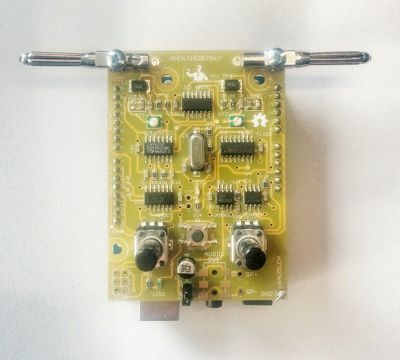
The first board assembled and ready to test. The space saved with the simplified design allows for two knobs.
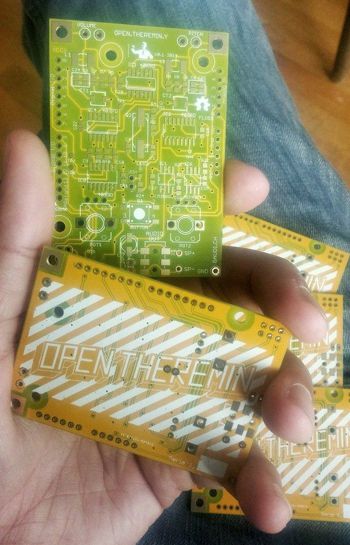
And here they are, in yellow of course. They look great, with gold pads, perfect quality.
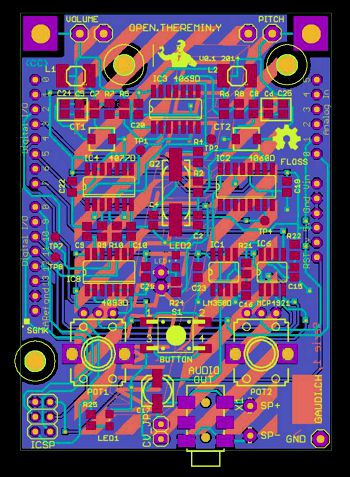
The prototype design looks great. Ordered 5 boards at seedstudio...
16 June 2014
This is about a redesign of the current open.theremin.uno.
Mayor changes and improvemtns are:
- Automatic tuning, no callibation needed for standard size of antennas. This probably being the mayor possible improvement on the digital theremin I finally found a way to do it without complicating the circuit. Still using a heterodyne oscillator and callibrating zero beat at the output of it. It needs however some extra effort on the software side to integrate and filter.
- Simplification of design. And yes, while the current design proofed to be reliable and straight forward there is still potential for simplification. Now using only one fixed frequency quartz oscillator and symmetric variable frequencies. Using a schmitt trigger in stead of the analog comparators. And then I decided to remove the control voltage output (if no big opposition)
- Added pads for two potentiometers to control various things like wave form or sensitivity. Will probably be an option.
- Same form factor. While all open.theremins have been made on green PCBs so far, the new boards should be yellow. This is why the redesign is called Open.Theremin.Y.
- What else? The design is still flexible. I plan to order first prototype boards in two weeks. One frequent request is to integrate the arduino on board. Not sure about this one. Would be more work to assemble and probably more expensive. What do you think?
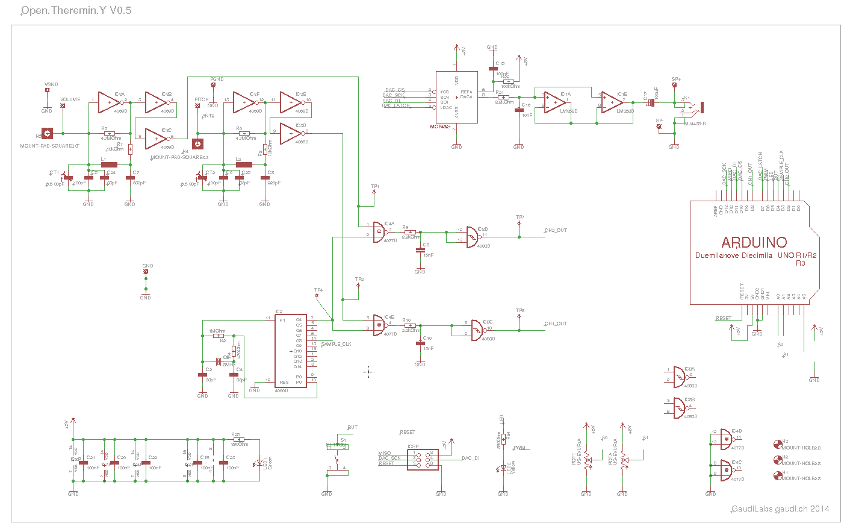
Schematic of the Open.Therrmin.Y
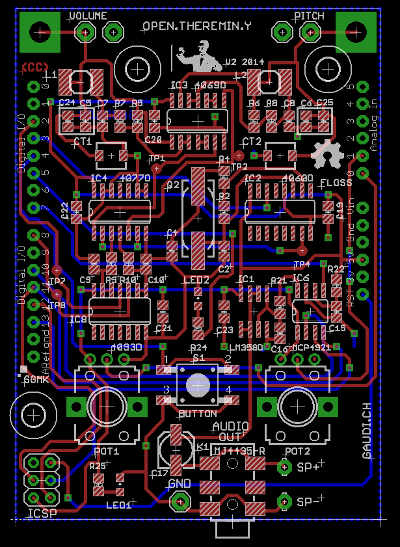
Design of the Open.Theremin.Y
This is work in progress. The concept is still flexible and the design is not tested yet. Also the software for the Open.Theremin.Y will need to be developed.
Your ideas and comments are wellcome:
{jcomments on}



